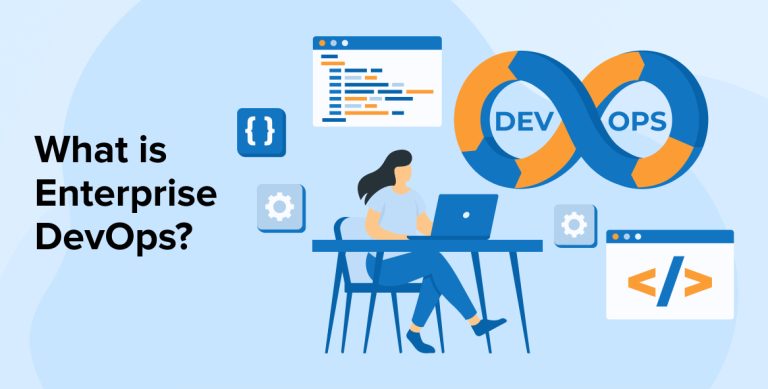
A common misconception is that Enterprise DevOps is only applicable to start-ups or big titans with cloud-native roots. But for fact, enterprise application development has its own positive impact on any company, regardless of its size or maturity.
Having said that, establishing a DevOps culture might seem like an impossible undertaking. Changing the culture of an organization, especially one with a long history of established practices and a large number of legacy procedures and services, may be difficult. There’s a chance, though.
Directed in this article, you will learn how you may begin and maintain a DevOps journey with challenges and scaling better from this blog.
1. What is DevOps?
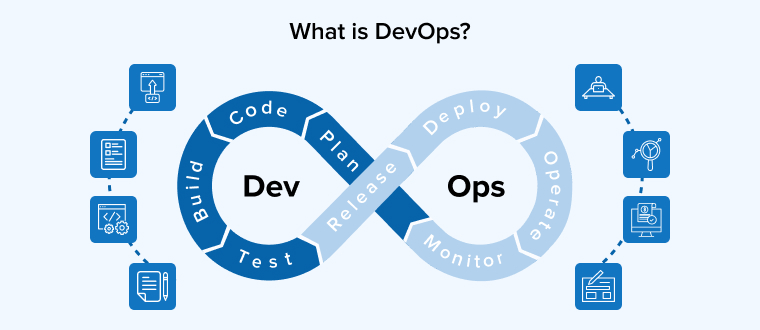
DevOps is an organizational development strategy that has gained traction in recent years. There has been an increase in the use of DevOps in the workplace, with 74% of organizations using some type of DevOps. In order to survive, organizations must make a move from manual to automated processes and communications.
DevOps, despite the fact that it has been linked with a wide range of software technologies and systems, is based on the organizational revolution of development and operational companies. Cultural ideas and people are more important than a single set of tools, a single method, or a single design architecture.
2. Components of DevOps
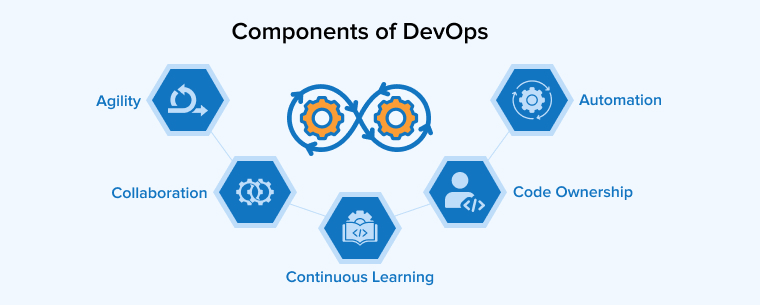
The six basic principles of DevOps are:
Agility: The capacity to adapt fast to emerging innovations and services, as well as to smoothly scale tools and operations is known as agility.
Collaboration: Cross-team cooperation means tearing up corporate “silos” that exist among engineers, ITOps administrators, and business stakeholders.
Code Ownership: DevOps emphasizes the notion of “own your coding” to motivate engineers to engage in all stages of software deployment, from authoring and delivering code to analyzing applications in operation.
Automation: In order to improve agility and cooperation, DevOps places an emphasis on automating operations from code development and deployment through application monitoring.
Continuous Learning: DevOps teams enable firms to continually review their products and provide continuous integration by gathering data and developing continuous feedback loops.
The cornerstone for executing these ideals is effective and organization-wide communication.
3. What is Enterprise DevOps?
When it comes to DevOps, we often see the same techniques in smaller companies. Because of the modest rate of change, most of their technology remains static. Many aspects of a company’s operations go to the enterprise at some time. For this reason, enterprise DevOps implementation is designed to assist the technology to adapt these changes. Consider a website that is designed to manage a reasonable volume of visitors. Enterprise DevOps relies heavily on horizontal and vertical scalability in order to be prepared for unforeseen spikes in demand.
While scale DevOps engineers have always been tasked with automating, a shift to an enterprise DevOps perspective necessitates a new strategy. The existing and future state of the ecosystem shall constantly be at the top of the priority list.
A better degree of security is something else on which businesses prefer to put more emphasis. In the area of DevOps, this is known as DevSecOps, a collection of controls and gates designed to keep code quality and data safe. Even though enterprise DevOps isn’t specialized in this, large enterprises may require additional security screening and automation to meet certified or regulatory requirements.
In addition to the DevSecOps approach, many large corporations must also adhere to regulations pertaining to the protection of customer data. They use a variety of techniques to look for the most prevalent vulnerabilities in order to combat these kinds of dangers.
In current history, “shift-left” has become another common word. Code integrity is “shifted left” using this technique, which necessitates more verification and validation before the fresh program can be committed to the code base. Despite the fact that shift-left is neither specific nor unique to companies, the problems of adopting and executing shift-left in larger organizations are significantly greater. As you can see, the change is mild in small businesses because of the tiny size of the overall staff. Organizational complexity and multiple methods are required in order to successfully move things to the left in large corporations.
4. Enterprise DevOps Methodology
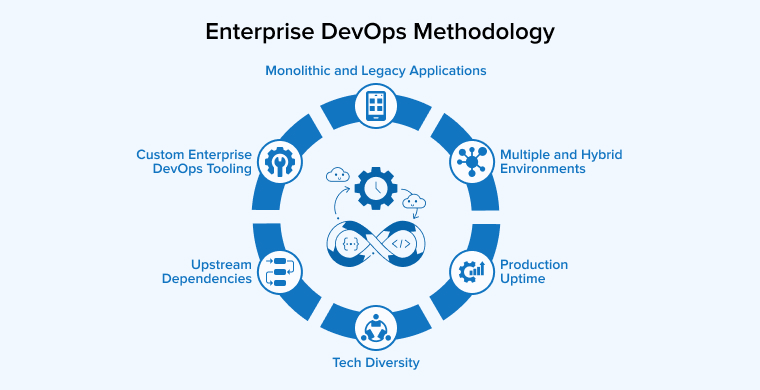
Since what you do can be scaled up, we should encounter every alternative as if you were facing many of the same problems as those who do enterprise DevOps. If the alternative works with thousands of directories and a lot of developers, it will definitely work with fewer repositories and fewer developers. Still, you shouldn’t design too much. Set the groundwork for enterprise DevOps, but don’t spend money on processes and skills you won’t need until you need them.
What else might need to be taken into account for an increasing successful implementation?
4.1 Monolithic and Legacy Applications
For several excellent reasons, businesses need to keep some aged systems around to endorse either a backend or a user interface (UI) issue. You might also call these “legacy” or “monolithic” applications. They are generally written in a stack that many programmers today may not know much about. Nevertheless, these are important things to think about when setting up DevOps for the enterprise.
4.2 Tech Diversity
Today’s development teams and designers have many necessities that are focused on the technologies and settings that are particular to their project. For many businesses having a lot of multiple teams means that they know how to use different programming languages and techniques. Not every one of these languages needs the same method. Because of this, the tools picked for enterprise DevOps adopt multiple stacks and ways to create automation in these situations.
4.3 Upstream Dependencies
When diverse teams start using each other’s parts, a single change that breaks things can sometimes cause a chain reaction. Having taken this into consideration is very important if you want things to go well. Dependencies that are too complicated can waste a lot of time throughout development and particularly during interruptions. Dependency charts are beneficial, but so are things like automated regression testing. Enterprise DevOps teams know that they need to do things like “Smoke” and “Sanity” tests, which are automated QA processes.
4.4 Production Uptime
Embrace DevOps automation itself is not accomplished when the script is implemented and the sun goes down on some other good official launch. As part of an enterprise DevOps implementation, extra tools are used to make sure that essential services and applications are always available. Most of it does more than just send an alert. Nowadays, self-monitoring, self-correction, and automatic scaling are all possible depending on aspects that are much simpler to control with end to end automation.
4.5 Multiple and Hybrid Environments
Many companies have moved quickly to use cloud resources, so you often have to deal with multiple ecosystems that use both the cloud and resources in a data center. For enterprise DevOps to be able to manage these resources, it would require tools for a hybrid cloud environment. It is also possible to use more than one cloud. This should guide your choice of tools. Luckily, many of the DevOps tools available today have ways to deal with this.
4.6 Custom Enterprise DevOps Tooling
Sometimes, what’s in the industry doesn’t quite accommodate what must be accomplished in a certain setting. The DevOps team may want to write custom code or scripts to solve these problems. This could be because of legacy needs or for other reasons. Part of making sure that standards are met is to keep these custom tools safe. Putting DevOps adoption scripts and codes in a repository is a good idea for more than just protecting them for the future. It lets people work together and assign work in sprints, similar to any other development team.
5. Best Practices for Enterprise DevOps Transformation
5.1 Boost Confidence in Business
Embrace DevOps changes the way people think, and when that happens quickly, everyone needs to be on the exact page. By making everyone engaged in the DevOps lifecycle and giving clear roles and responsibilities, coworkers feel more confident and see themselves as an important part of the transition process. Having a clear position that says which team makes what part and when to deploy it breeds confidence. Also, give the team the setup ecosystems they need to test as they are building.
In 2015, Starbucks was crowded serving 300,000 people every day. It wasn’t simple for the decades-old building to handle this many consumers and orders. The business needs to decide to switch to the DevOps approach at that point. Boosting business confidence between many of the coworkers was one of the biggest difficulties Starbucks confronted throughout this change. There, the company told each team what their role and duties were and held them responsible for a certain task. Changes made within the company were very effective and cut the cycle time by 74%.
5.2 Minimize Operational Friction
In a DevOps community, the development and operations teams must work together often to make sure that quality products are made quickly. But if there is conflict between the two groups, you cannot expect to use DevOps to its fullest. By giving different teams the right tools to work together in real time, you can make sure there are no communication gaps or wasted time when trying to reduce a risk. By lowering operational pressure, firms will be able to automate more tasks because they won’t have to ask different teams for reviews. All of the communication will happen in real time, resulting in help make the move to DevOps a smooth one.
Over the centuries, Etsy, an American online store, had a lot of trouble with excruciating deployments. The designing teams at the company didn’t work well together. There was constant conflict between the different teams, which was slowing down work. Etsy noticed that its teammates’ implementation rate was too slow and that it should be somewhat speedier. So, in 2009, the company opted to implement the DevOps culture and bring all the team members together.
Etsy gave each team clear positions and duties, and each team was responsible for its own rollouts. Mr. Rembetsy, the former vice president of Technological Operations at Etsy, told Network World in 2015, “They noticed that when programmers felt responsible for rollout, they would also feel responsible for performance metrics, high availability, and other targets.” This method made it easier for the multiple teams to work together, so Esty could implement 60 times per day.
5.3 Setup Compliance Policies and Processes
Every company has a collection of rules and procedures that all teammates should follow during the development procedure. The same is true for putting DevOps into place. For the DevOps-based method, it is common to use policy-driven strategies. So, start making rules and processes for data security, business functions, development methods, language guidelines, SRE, sysops management, and development to continue making DevOps easier to use.
Adobe Creative Cloud has assistance that lets people use legacy software like Photoshop, Lightroom, Illustrator, etc. to create and modify their images. At first, Adobe used monolithic architecture, which made it easy for services to talk to each other on point-to-point. But as the number of products flourished, integration became very hard. In the end, Adobe began its DevOps cultural transformation voyage and began using microservices, containers, and CI/CD pipelines. With the Adobe Experience Platform Pipeline up and running, Adobe had set up its guidelines and processes, which made the change go smoothly.
5.4 Configuration Management
From a production point of view, setup and change management are two of the most important things. It has to do with automating, monitoring, maintaining, controlling, and setting up servers, systems, and high quality software. The DevOps approach enables software engineers and operation management staff to optimize the continuous integration and delivery process by making sure that all release processes are set up in the same way. Below are a few of the most best tools used in the business world for configuration management:
Chef: Chef is a configuration management tool that businesses that focus on DevOps use to automate the process of setting up architecture. It also helps with managing servers.
Ansible: Ansible is an open-source software provisioning and configuration management tool that makes it possible to run as code cloud infrastructure.
Puppet: Puppet is a tool for managing software configurations that is used to automate IT. Puppet is used on IBM mainframes, Cisco switches, and Mac OS, among other platforms.
5.5 Continuous-Integration
Continuous integration lets programmers merge code modifications and improve the codebase in the master and common library. The master database constructs and runs the software automatically, so that programmers can find and fix bugs. Programmers can fix those mistakes to improve the performance of the software and cut down on the time it takes to release or integrate the next model. Listed below are a few of the tools found in the business world for continuous integration:
Jenkins: Jenkins is an open-source server based on Java that helps programmers automate the processes of continuous integration.
Gitlab: GitLab is among the most prevalent automation tools for software development that concentrates on continuous integration. It helps engineers get their work out faster.
Bamboo: Bamboo is a continuous integration server that assists to make a continuous delivery pipeline and expedites the process of making software applications.
5.6 Continuous Deployment and Delivery
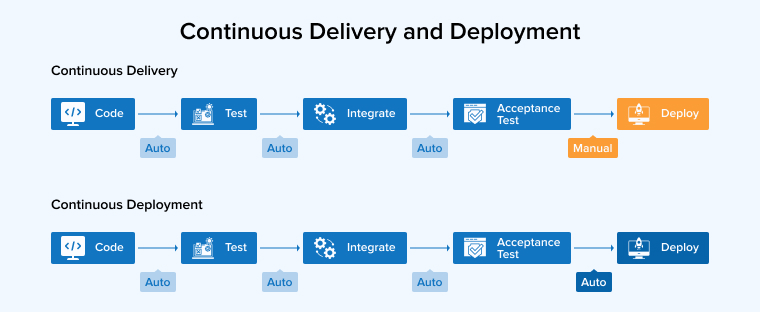
5.6.1 Continuous-Deployment
Continuous deployment lets the software developers automate the whole method, from putting the code into production to final software delivery. When all of the QA (Quality Assurance) tests have passed, the code is immediately updated, which saves time between development and delivery. As changes are made to the app, the clients will get the latest update.
Below are a few of the most prevalent tools for continuous automate deployments:
AWS CodeDeploy: AWS CodeDeploy is a highly scalable deployment service from AWS that helps you keep putting out new versions of your apps without making any mistakes.
AWS CodeDeploy: Octopus Deploy is an automated deployment server that simplifies the process of implementing Java, ASP.NET, Node.js, and other applications.
DeployBot: You can use DeployBot to create and distribute code by following the same process every time. It can be used for both manual and automatic deployment.
5.6.2 Continuous-Delivery
Creating and launching enterprise-level software takes a lot of work and time. Separate releases, on the other hand, are a formula for bad value and success. Rather, the new approach is to orchestrate the continuous delivery of enterprise apps. This approach concentrates on continuous improvement and integration to make sure that excellent software is delivered.
Most people use the following tools for continuous delivery:
Buddy: Buddy is an intelligent CI/CD tool that makes it easier to get started with DevOps. It builds, tests, and deploys software with the help of delivery pipelines.
CircleCI: CircleCI is a CI/CD tool that helps with the quick development and deployment of software. It focuses on automating the user delivery pipeline so that software delivery can happen more quickly.
TeamCity: TeamCity is the CI/CD tool from Jetbrains that enables you to create, implement, and deliver different kinds of software projects. It can work with Visual Studio and is written in Java.
5.7 Continuous-Testing
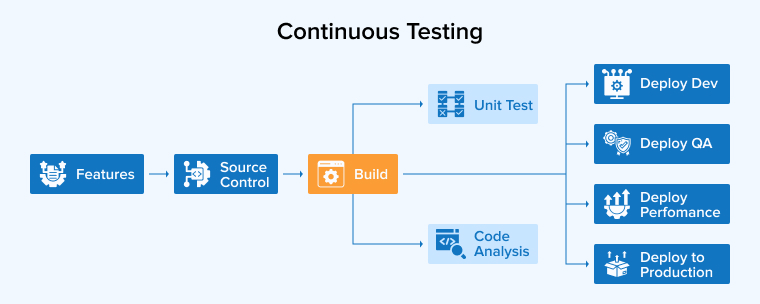
In a classical software development process, testing seems to be another part that most individuals don’t pay much attention to. But if you want to implement DevOps, you have to obey the practices of automation and testing all the time. It will allow developers to find the inaccuracy and fix it as soon as possible, before the software is put into production. Automated testing is more credible and less likely to make mistakes than manual testing. Below are a few tools that can help you test all the time:
Selenium: Selenium is among the most common tools for automating testing across different platforms. It is mostly about testing websites and web apps.
Applause: Applause gives real-time, honest feedback on the reliability of digital experiences so that high-quality products can be released more quickly.
Blazemeter: Blazemeter is an open-source, enterprise-ready continuous testing tool that can be used for load testing, performance testing, and functional testing.
5.8 Continuous-Monitoring
Continuous monitoring is the classic method of using processes, methods, and instruments that assist, estimate and monitor the procedures of each advancement and operations-related lifecycle step. This method will help you make sure that the software works well, is efficient, and is reliable as it keeps moving from the development stage to the stage of production. Below are some of the most effective tools for continuous monitoring:
AWS CloudWatch: AWS CloudWatch gathers, authenticates, and ties together the data from AWS resources on an unified platform so you can track how well an application is running.
Akamai mPulse: Akamai mPulse is a real-time tracking tool that lets DevOps teams obtain and evaluate data about how people who attend their websites act and what they do while there.
Dynatrace: It gives you a single platform where you can easily monitor the whole stack of DevOps technologies and ecosystems.
6. Challenges in an Enterprise
Adoption is fraught with difficulties. In order to make software development lifecycle and administration more efficient, it might be challenging to coordinate the efforts of the many development teams involved. If a group of developers is split up into smaller groups to work on separate projects, things get much more difficult.
DevOps culture is not a one-size-fits-all approach, and entire organizations are still reliant on outdated systems and applications. When it comes to older systems, standard DevOps practices can be employed, such as leveraging contemporary alerting technologies to provide continuous monitoring.
Safety, regulatory, and accountability considerations can also slow down an organization’s ability to change swiftly. Organizations interested in implementing DevOps must, however, find methods to match it with shift management and threat reduction. DevOps culture demands adaptable roles, such as ITOps engineers needing to be familiar with the work of developers and inversely. The problem is that not all engineers are capable of this. The necessity for more IT personnel or training for present engineers may thus be felt by businesses.
7. Scaling DevOps to the Enterprise
There are several omissions in the preceding list of DevOps blind zones.
DevOps and Change Management – A product like BMC Remedy might seem pointless to a DevOps or Change Management team, but it is vital to a software development team or a network operations centre.
Approval Gates and DevOps – Regulatory gates exist in big organizations building high-risk applications because the software teams can automate and regulate continuous delivery without significant delays and development processes.
DevOps and Non-automated Environments – When it comes to DevOps, engineers have the freedom to turn up and shut down cloud platforms, but the business is typically resource-restricted for facilities, and it might take days to build and approve a new setting.
DevOps and Orchestration – Software launch orchestration may be a hurdle for big technology launches, although DevOps stresses operations teams effectiveness from a creator’s point of view.
A DevOps initiative has all the telltale symptoms of elevated risk and upkeep from the IT department’s perspective. Defining what it requires to cross the distance across DevOps and IT is the focus of the following part.
8. Achieving Enterprise DevOps With Tatvasoft
The use of DevOps will only grow in the future. Companies may only profit from DevOps if they make a long-term commitment to the practice and integrate it into their whole corporate culture. An enterprise’s DevOps progress can be bolstered with TatvaSoft.
9. Summary
DevOps at smaller firms have already influenced enterprise DevOps in many ways, as you’ve probably seen. Safety and change management must be taken into account at every level, from the numerous stacks currently in use to the smallest details.
In order to stay up with today’s industry, those that practice enterprise DevOps apply what they’ve learned to larger initiatives. Is this what you want? When everything runs well, the team is better equipped to achieve its goals and maintain its compliance with today’s ever-evolving technological world.
DevOps, after all, is just DevOps, right? Wrong. That’s not exactly correct. DevOps is mostly used in small businesses to boost productivity. Far beyond that: in large corporations the role of risk management is crucial to their profitability, engaging with the most vital and risky aspects of the business. This necessitates a shift away from traditional DevOps approaches and mindsets and toward enterprise DevOps, as described in this article.



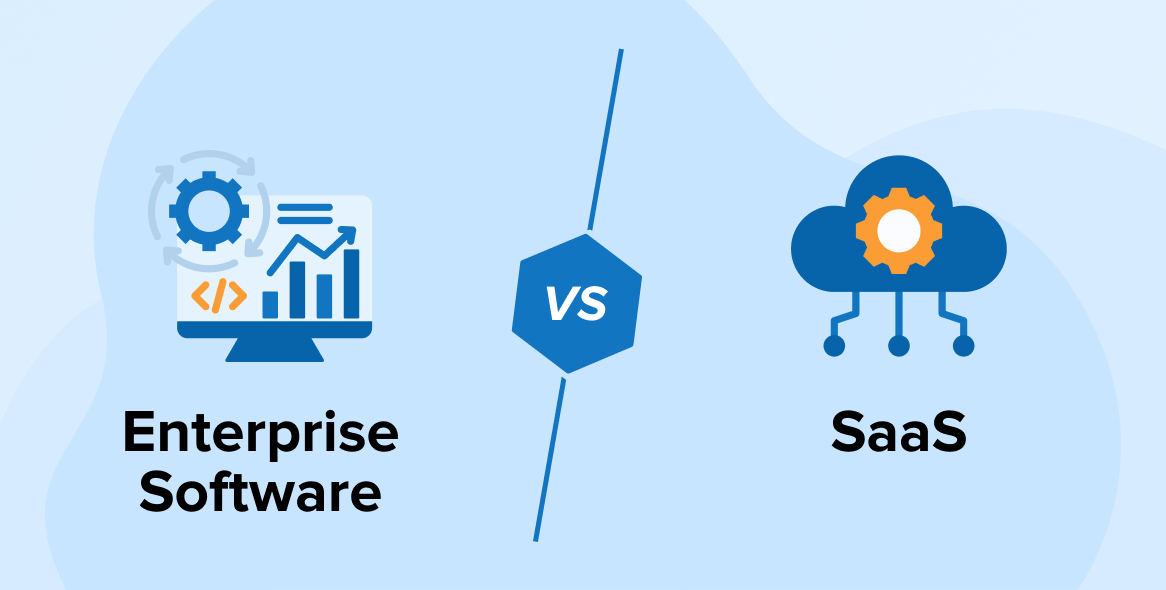


As a software developer, I can vouch for the benefits of implementing DevOps in an enterprise setting. This blog offers valuable information and best practices for adopting DevOps in large organizations. Thanks for sharing!
I thoroughly enjoyed reading this blog on enterprise DevOps. The case studies and examples cited in the article demonstrate how DevOps can accelerate software delivery, improve collaboration, and enhance overall business outcomes. Informative and insightful!